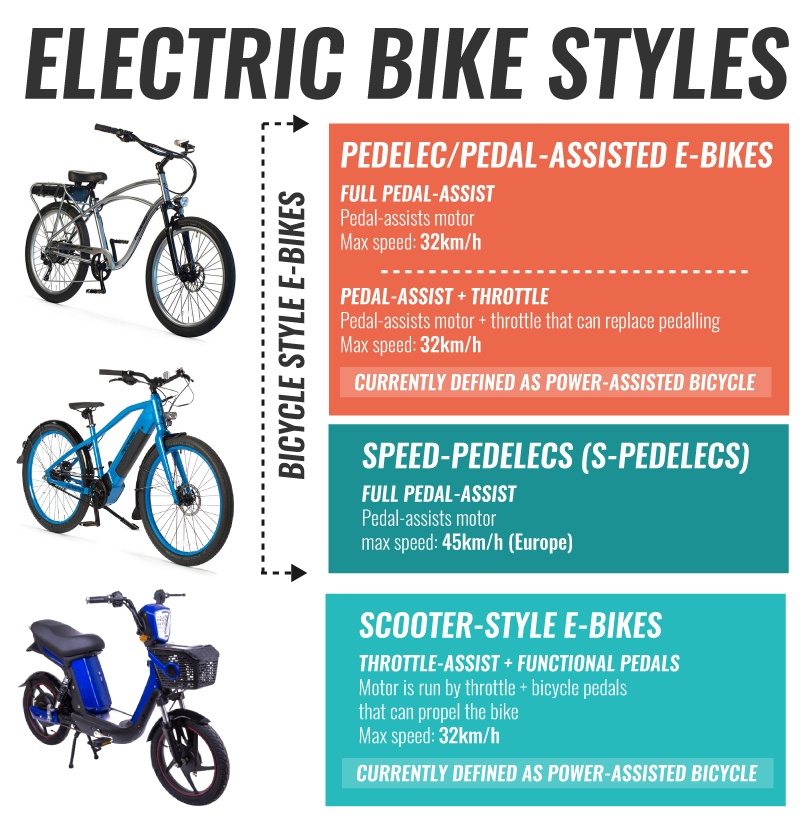Canadian electric bike integration

Canadian electric bike integration: new rules afoot
We enjoyed reading Leading the Charge on Canadian Electric bike Integration: A Discussion on the Emerging & Unchartered Role of Micromobility a white paper recently released by engineering consultants WSP Global. It’s a 60-page document that covers the status of electric bikes in Canada, future trends, current legislation and makes useful comparisons to foreign countries. We especially like the way it defines electric bikes primarily as “Bicycle Style E-Bikes” and “Scooter Style E-bikes”. In Canada, on a federal level, there is essentially no legal difference between these two styles of electric bikes. One is designed to be pedaled, the other is designed to pushed by a motor, but they both have pedals in order to meet the Transport Canada classification for a “power-assisted bicycle”. The reality for most scooter-style bikes is that the pedals are a token effort designed to achieve the classification. If you try to pedal one of these you will see it is impossible to move any distance under your own power!

There are a multitude of other ways people try to segregate electric bikes, for example by size of motor, presence of throttle, max speed or wheel diameter. But we agree with WSP, the best way to distinguish between electric bikes is by making a line between bicycle-style where the motor is generally intended to assist pedalling (the throttle is optional), and scooter-style where motor runs independently from pedalling (pedalling is optional but not realistic usually). Another big difference is weight: a Pedego weighs about 25kg with a 4kg battery, while a scooter style e-bike weighs 75-100kg. Visually, these two styles of bikes are usually easy to pick. Look at this handy graphic that shows the huge visual difference in electric bikes currently legal in Canada: On page 18 there is a table comparing the legislation in each province, taken from our “Are Electric Bikes Legal in Canada?” article. Then the authors go on to compare us to international legislation, showing how what is considered an e-bike in Canada is not the same as an e-bike in the USA, again not the same as an e-bike in Europe. The paper flags an upcoming change: the Canadian government is proposing to deregulate power-assisted bicycles. This means that the Motor Vehicle Safety Act would no longer be the umbrella legislation and Transport Canada would no longer define “power-assisted-bicycles” with the provinces having to adhere to this definition. The intent, according to the White Paper, is to bring Canadian legislation into line with the USA, therefore, removing trade barriers. Rest assured that we’ll keep you up to date with any changes that may affect electric biking in Canada. The paper identified some barriers to widespread adoption of electric bikes in Canada. These included weight, cost, range anxiety, stigmatization, confusion, and lack of exercise. We’re doing our part to reduce these barriers, and for more informative and useful tools take a look at Electric bike info, or call one of our dealers to have a chat about everything e-bike. It’s the transport of the future!





